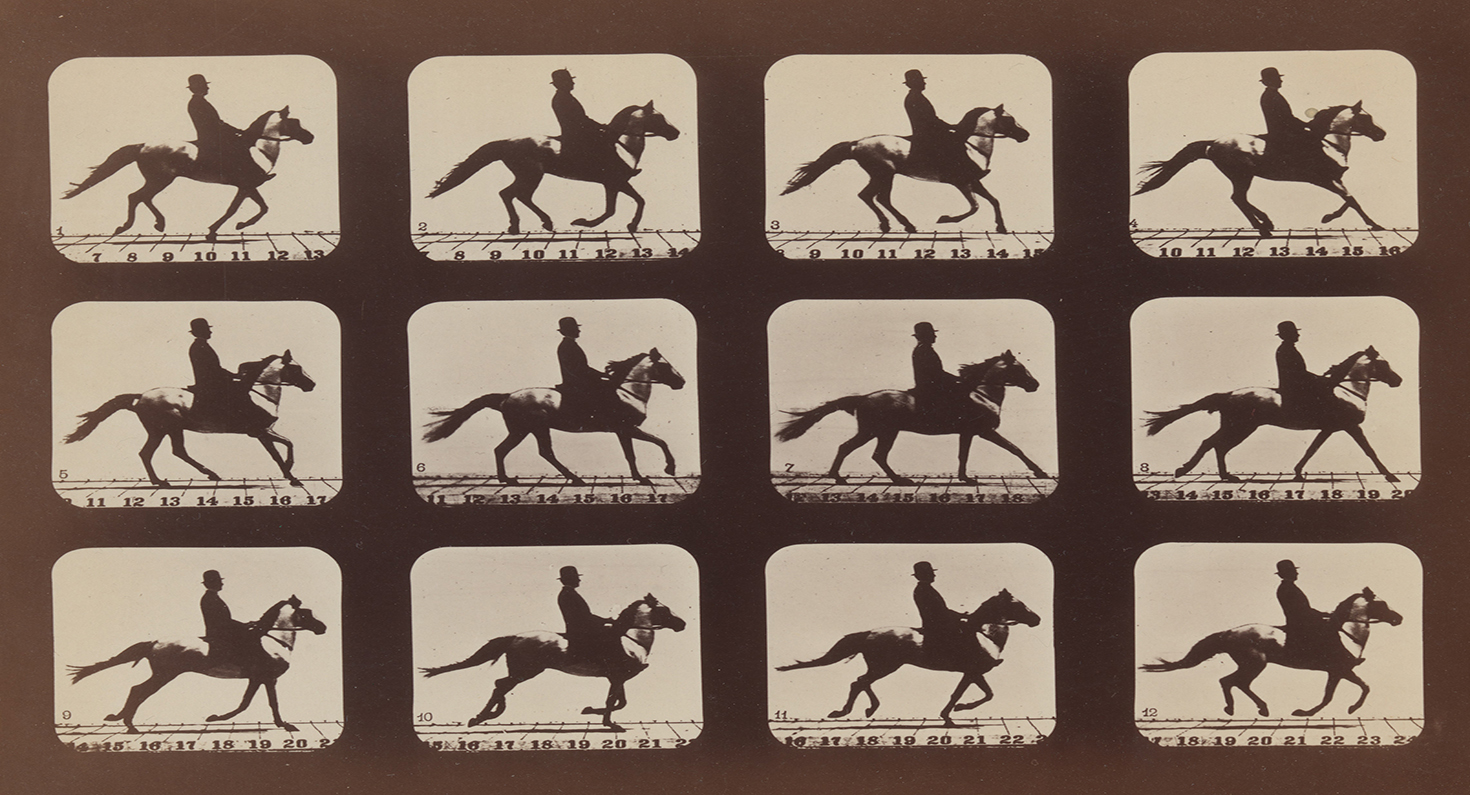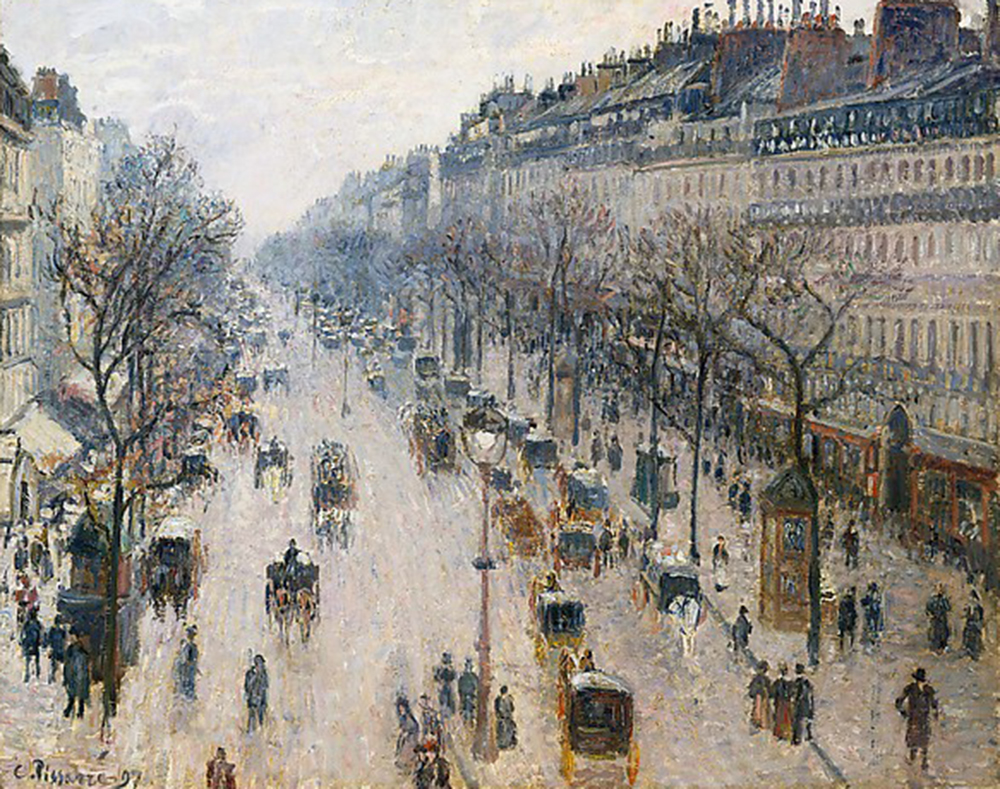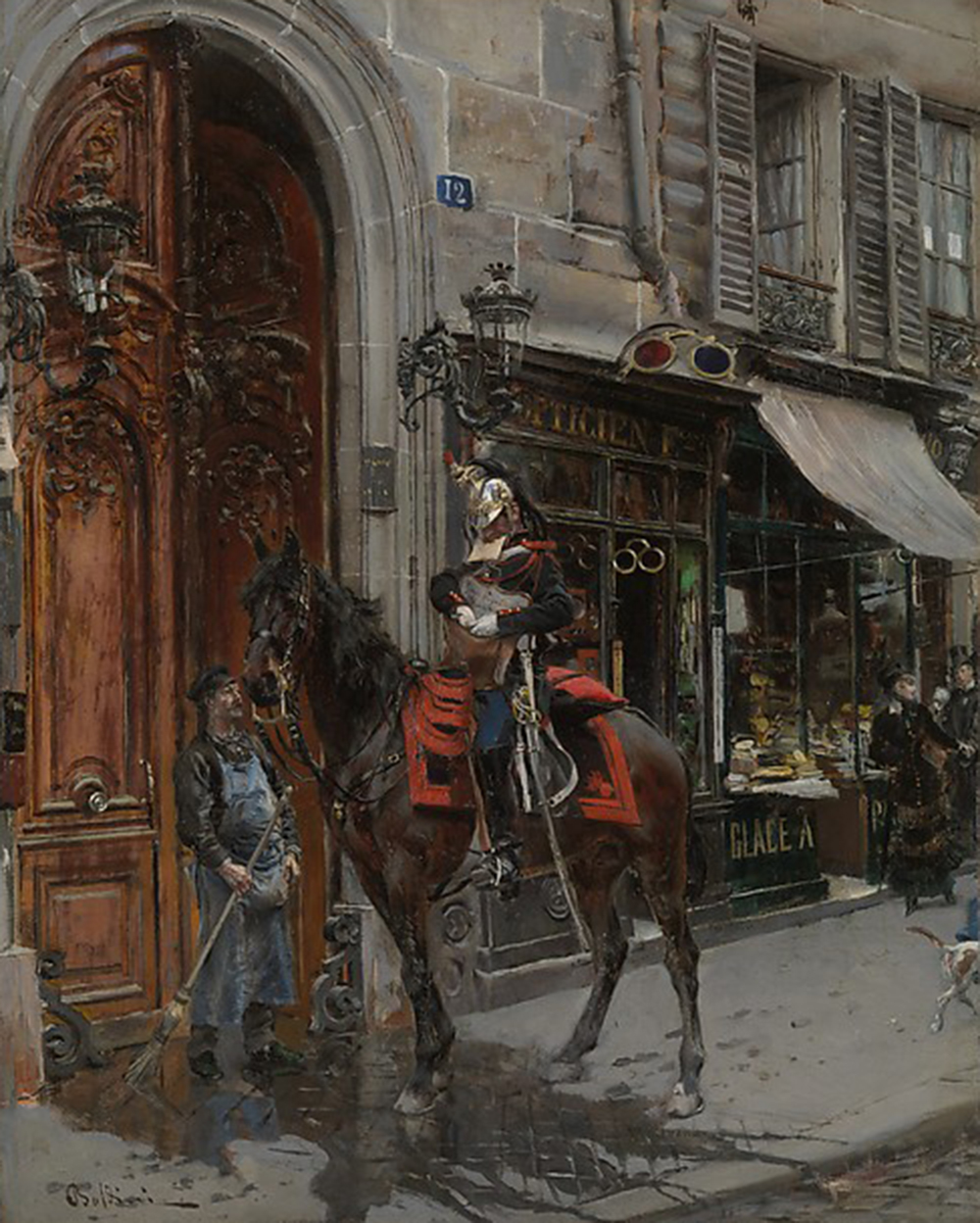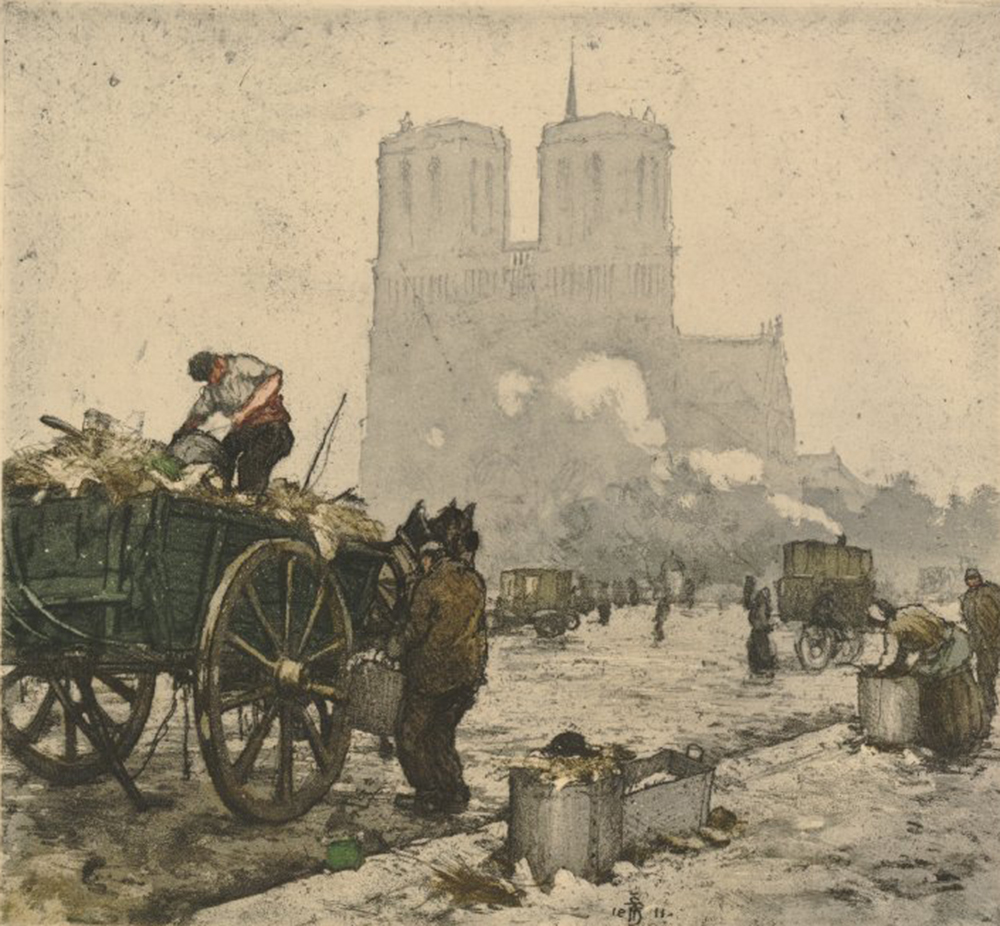
Attitudes of Animals in Motion, 1879. Photograph by Eadweard Muybridge. The Metropolitan Museum of Art, Gift of Joyce F. Menschel, 2015.
When playwright and poet Friedrich Schiller passed away in May 1805 after a long terminal illness, he left behind him a considerable number of unfinished plays. One of the drafts, entitled Die Polizey (“The Police”), was a tragedy set in prerevolutionary Paris, a colossal amphitheater where citizens and information are subjected to sinister monitoring by the authorities. At the heart of the drama is the bureau of the omnipotent police chief. His real nemesis is not the shadowy criminal world, but the intrigues of the nocturnal city. Paris becomes a superhuman protagonist in its own right. As in most of the draft manuscripts cut short by Schiller’s early death, the playwright had not yet made a start on the rhyming verse of the police drama. The play is instead sketched out in prose dialogue, swarming with excerpted quotations and draped with the fruits of his reading and turns of phrase he had picked up here and there. One of the most striking is the phrase “Paris is paradise for women, purgatory for men, hell for horses.”
Schiller did not invent this memorable tripartite dictum, he merely tweaked the rhythm. Louis-Sébastien Mercier, whom he quotes, speaks of “le paradis des femmes, le purgatoire des hommes & l’enfer des chevaux.” For his Paris drama, the poet Schiller finds in Mercier’s Tableau de Paris an inexhaustible source of quotations and observations. Schiller adopts from him the seemingly contemporary depiction of the police force as a great machine, along with the city as a kind of Moloch who comes into his own in the night. It is clear from the following sentence in Schiller’s notes that he had not overlooked the demographic context of Mercier’s aperçu: “Mortality rate in P.—20,000 per year.” This statistic is also derived from Mercier, who under the heading “Population de la capitale” furnishes evidence that the men of Paris died at a more tender age than women. This, Mercier argues, is why people speak of Paris as the paradise of women and purgatory of men. Only the horses and flies dropped faster.

But this elegant axiom was not coined by Mercier either. The trope about women, men, and horses was doing the rounds a whole two centuries earlier. It seems that it was the French author Bonaventure des Périers who first composed the expression in 1558. In the thirty-first short story included in his posthumously published collection Nouvelles récréations et joyeux devis, Paris is described as “paradise for women, hell for mules, and purgatory for petitioners.” Towards the end of the sixteenth century, John Florio in his Second Fruits was the first to express the idea in the classic formation: paradise for women, purgatory for men, hell for horses. And again, thirty years later, in 1621, Robert Burton brought the concept of a paradise for women and hell for horses back to England in order to contrast his homeland with Italy, where everything is reversed and it is the horses that are in paradise. But it was Mercier who brought the memorable phrase into such wide currency. This tricolon reminds us of Dante, who is never far away when it comes to talking about hell. But everyone made use of it to suit their needs. The canon of Hamburg cathedral, F.J.L. Meyer, followed up his 1802 trip to France by publishing his Letters from the Capital and the Interior of France (Briefe aus der Hauptstadt und dem Innern Frankreichs ), in which he praises the quality of the police and bemoans the lot of the horses in Paris. You can get there very cheaply, he writes, but the horses and their harnesses are in a dreadful state. Women, men, mortality rates—the whole demographic context is left out of the picture and all that remains is the misery of the horses, which henceforth survives as a topos that spreads throughout the Parisian literature of the nineteenth century.
It comes up again in the work of Eduard Kollof, the Paris correspondent for the Morning Journal for Educated Readers (Morgenblatt für gebildete Leser ), published by Cotta. Kollof reported in 1838 on “the Paris transport industry” and employed the following description of the hellish traffic in the capital: “When one sees the great quantity of carriages that trundle back and forth ceaselessly through the streets of Paris from morning ’til night, one wonders how it is possible that there are still pedestrians to be encountered on the sidewalks. Cabriolets, fiacres, deltas, lutétiennes, tilburys, barouches, calèches, coupés, landaus, gigs, curricles, four-horse post-chaises, six-horse diligences—all of these ride up and down, day in day out, weaving and winding, breaking axles, tipping over, causing untold accidents in the French capital, which has long been known as a paradise for women, but has more right to be known by its other nickname, a hell for horses and equally fitting would be hell for pedestrians.”

Even among Arab diplomats and writers, a hell for horses is a familiar watchword. Among them is the vizier Ibn Idriss Muhammad al‑’Amraoui, who in 1860 visited the court of Napoleon III as an emissary of Sultan Muhammad IV of Morocco. Al‑’Amraoui adopts the formula from his experienced predecessor, the Egyptian Sheikh Rifa’a Rafi’a al‑Tahtawi, who had travelled to France a few years earlier. The vizier shows little interest in the demographics of Paris or in the traffic conditions in the capital. In his eyes, the reference takes on a slightly different significance: he refers to the dominance exerted by women within their domiciles and sometimes even beyond their walls. The Oriental visitor senses a cultural danger in the power wielded by women, which makes it advisable, as far as he is concerned, to keep one’s distance from the West. The sight of the Frenchmen’s horses prompts condescension from the Arab connoisseur: “Excellent horses such as we have are not to be found over there.”
The Tableau de Paris, Mercier’s panorama of the Paris of the 1780s, on the eve of the revolution, consists of numerous prose sketches or essays which read like the captions to paintings. The entire composition breaks down into kaleidoscopic shards, a series of frames, many filled with mayhem, shouting, shoving, the hustle and bustle, clamor and odors of the city. Like the illustrations of a children’s book, swarming and teeming with activity, in Mercier’s detailed descriptions we recognize characters, familiar faces, well-known scenes. There is also one particular ever-present protagonist, whom we see lurking in every shadowy corner of his intricate cityscape, utterly indifferent to the topic under discussion, be it the spirit, the economy, wealth, the state of the city or the morals and health of its residents. Whatever the headlines, the gossip, the talk of the day, the horse always turns up where you least expect it.

In such moments, Mercier’s great cityscape almost becomes a novel about the two species sharing a common space. In the Tableau, the tale of the grandeurs et misères reveals an exceedingly close cohabitation. We speak of biocoenosis, an ecological community where several species live together in one space, one biotope. In this narrative, there are only two species sharing the biotope, their common habitat, while all their other fellow residents—the city’s dogs, cats, rats, pigeons—are pushed out of the picture, historically speaking. In the urban realm, the coexistence of people and horses is perceived as a ménage à deux. Of course, humans and animals cohabit very closely in the countryside, too, and have done since time immemorial, even sharing one roof, cosying up in one household or synoecism. But in a rural farmstead, the horse is not a farmer’s only housemate: the domain is also shared with cows, oxen, sheep, goats, pigs, geese, and hens, not to mention the mice, lice, and other parasites. The lives of humans and animals are often divided by only a very thin wall; one hears the other eating and chattering, one is aware of the other’s smells, and both chase away the same flies. The city with its reduced biodiversity gives the impression of allowing men and horses greater distance from one another. In truth, they are welded more closely together than ever, with the common habitat that is imposed on them, merging the two tribes into a common destiny.
All this is not without friction or tension. Reports of late eighteenth- and nineteenth-century Paris echo complaints about cramped conditions and the stench of the city, the dangers for pedestrians, the cacophony of the horse-drawn carriages. There are still places in Europe where we get a sense of how a horse-filled city must have looked and smelled; in Vienna and Rome, there are squares where fiacres and dozing horses wait for tourists. But can we imagine how a nineteenth-century city would have sounded? Everyone knows the rumble of a scooter on its nocturnal newspaper delivery rounds, the screech of a tram, the honking of taxis, and the death knell of a braking bus. But who can conjure up the cracking whips, the wagon wheels and horseshoes on the cobbles, in the early morning hours when sleep is fragile and ephemeral? The roar of the city becomes unbearable when the two species, horses and humans, come into too close quarters, when a rough carriage driver thrashes his weary beasts of burden. Arthur Schopenhauer denounced the cracking of whips as “the most irresponsible and shameful din,” which breaks the concentration of one who labors with his mind. “This sudden, sharp thwack which slices through one’s brain and shatters one’s thoughts must strike agony into every man who carries anything so much as resembling a thought in his head…The emotional effect on the horse, which is surely intended to be the same…is dulled and indeed annulled by the habitual use and incessant abuse of the thing: the horses do not accelerate their pace in response; even when driving an empty fiacre on the prowl for custom, trotting at the slowest tempo, they swat away constantly. The gentlest touch of the whip would be much more.”
Excerpted from Farewell to the Horse: A Cultural History by Ulrich Raulff. Copyright © 2015 by Verlag C.H. Beck oHG Munchen. Translation copyright © 2017 by Ruth Ahmedzai Kemp. Used with permission of the publisher, Liveright Publishing Corporation, a division of W.W. Norton & Company, Inc. All rights reserved.